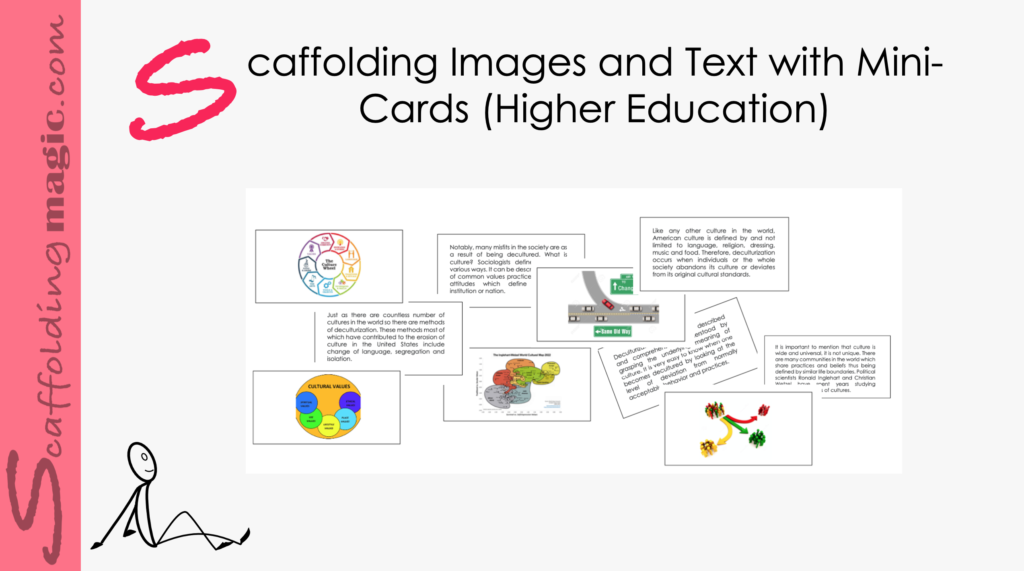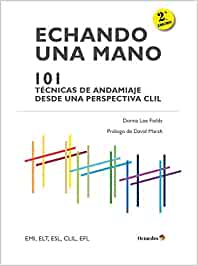You caught a beauty!!!
Download PDF of scaffold here.
theory behind scaffold…
We all know by now (pretend that you do, even if you don’t!!!) that teaching critical thinking is a never-ending job. Critical thinking strategies are domain sensitive, which simply means that a strategy that works in art may not work in history, and a strategy that works debating an issue may not work in figuring out how to outmaneuver an opponent in lacrosse.
Critical thinking strategies are also intricately tied to culture. The following is a fascinating study of students that elucidates this connection:
- A group of …………………… students along with a group …………………………………. most familiar to North American children.
- Seventy-five percent of the American students were successful in reaching a solution to the problems, while only 20% of the Chinese students presented appropriate conclusions.
- The two groups were then given an exam w………………………………s from each culture who reached successful solutions was diametrically reversed.
- The conclusion reached in the study, was that the polarity in scores resulted from the students’ ability to more rapidly process the details of the versions of the story they were most familiar with – the objects referred to, the reactions to circumstances in the plot, the dialogue of the characters, the subtleties of responses, etc.*
The studies expound on the subject, concluding that critical thinking strategies can become embedded in our consciousness the more we are exposed to them. In other words, t………………………………….
So what can we do? Well, instead following our first instinct and throwing up our hands, thinking that the task is so vast that we might as well not even begin, we instead take every opportunity to expand our practice. Whenever p……………………………….. We add to this repetition. As was illustrated in the scenario above with ………………………………………n the likelihood of assimilating strategies more deeply. Successful problem-solving many times results from simply repeated exposure to varied strategies.
In this scaffold, students have the opportunity to develop their linguistic and visual skills as they negotiate connections between text and images. They also interact with the information through temporal and grammatical transformations, as well as bodily-kinesthetic interplay.
step by step…
- Choose 1………………………… and place them into the template.
- Choose an image that represents each of the sentence clusters – either from the textbook itself or from other sources – and place them in the template as well.

- Students work together in the following way:
- Match the sentences with the image (remind them that there is no one correct answer, but only answers that can be justified).
- Read the sentence clusters aloud.
- Describe the images with as much detail as possible
- Formative Assessment/Reflection: Students write the answers to the following questions from the Question Continuum. (Remember, some questions reflect content and others reflect methodology, thus augmenting self-efficacy.)

- Is there significant deculturalisation in your town?
- Which values in your country would be most difficult to neutralise?
- Who is more likely to e offended by the concept of deculturalisation?
- When is it most appropriate to mention a cultural value or behaviour that is offensive to you?
- Where is deculturalisation most likely – in rural, suburban or urban settings? What makes you think so?
- What is deculturalisation?
- How did this activity hep you to assimilate some of the concepts of deculturalisation?
- Why is it important for governments to consider the effects of deculturalisation?
- What if you were on a committee to neutralise significant elements of culture between three different and co-existing societies. How would you begin?
video explanation of scaffold…
find more scaffolds here…


Scaffoldingmagic.com is your entryway into DYNAMIC bilingual learning methodologies, such as Phenomenon-Based Learning, CLIL, EMI, and ESL. You’ll find ways to implement critical thinking tools (DOK) to promote higher level thinking, the growth mindset, instill an ethic of excellence, deep reflection on learning, and all through multi-cultural, interdisciplinary activities. We have the keys to turning competences into action and to creating collective efficacy in your school so you move ahead as a unified, enthusiastic team.







